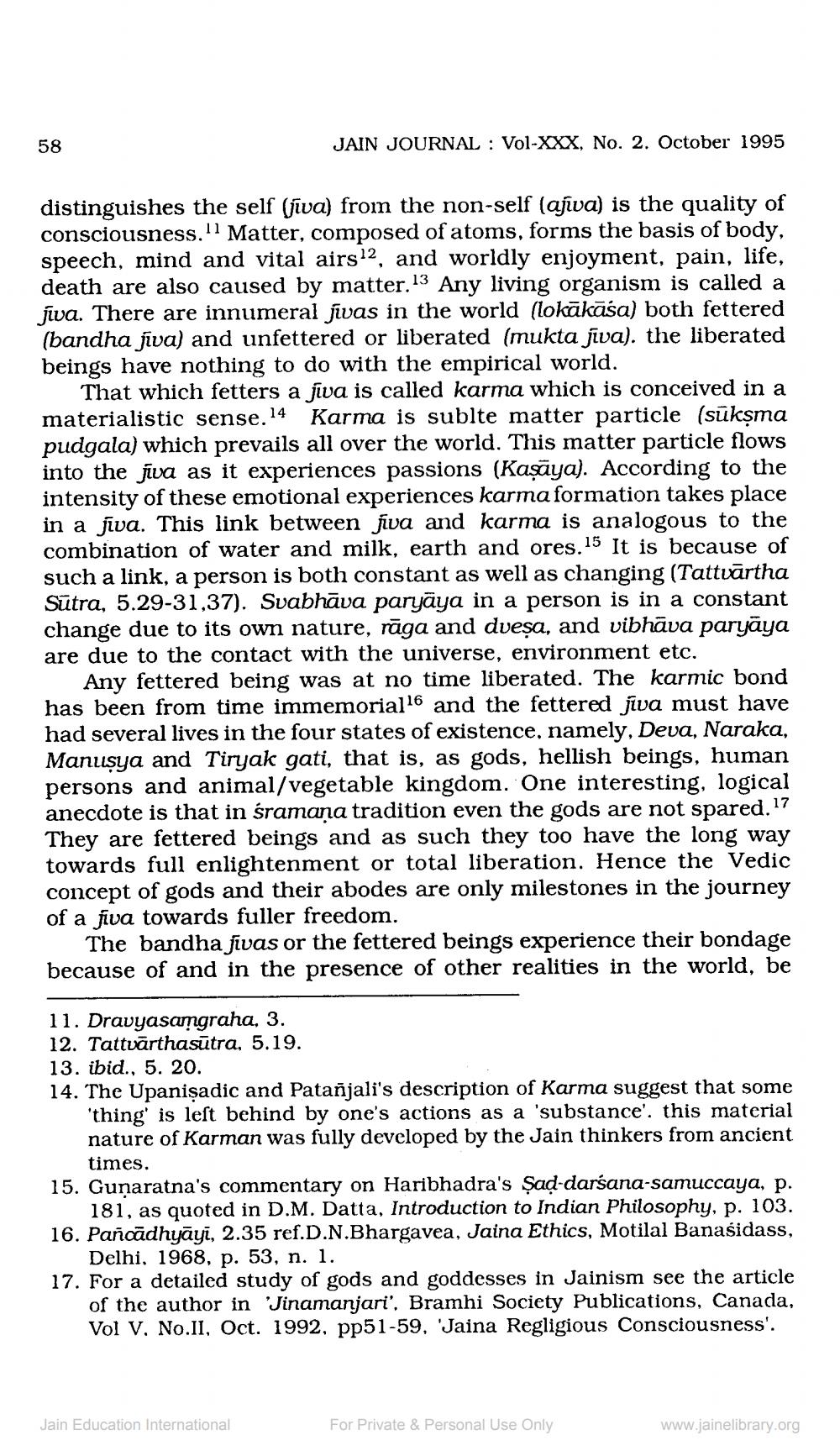________________
58
JAIN JOURNAL : Vol-XXX, No. 2. October 1995
distinguishes the self (jiva) from the non-self (aja) is the quality of consciousness." Matter, composed of atoms, forms the basis of body, speech, mind and vital airs12, and worldly enjoyment, pain, life, death are also caused by matter. 13 Any living organism is called a jiva. There are innumeral jwas in the world (lokākāśa) both fettered (bandha jiva) and unfettered or liberated (mukta jiva). the liberated beings have nothing to do with the empirical world.
That which fetters a jiva is called karma which is conceived in a materialistic sense. 14 Karma is sublte matter particle (sūksma pudgala) which prevails all over the world. This matter particle flows into the jiva as it experiences passions (Kaşaya). According to the intensity of these emotional experiences karma formation takes place in a jiva. This link between hva and karma is analogous to the combination of water and milk, earth and ores. 15 It is because of such a link, a person is both constant as well as changing (Tattvārtha Sūtra, 5.29-31,37). Svabhāva paryāya in a person is in a constant change due to its own nature, rāga and dveşa, and vibhāva paryāya are due to the contact with the universe, environment etc.
Any fettered being was at no time liberated. The karmic bond has been from time immemorial16 and the fettered siva must have had several lives in the four states of existence, namely, Deva, Naraka, Manusya and Tiryak gati, that is, as gods, hellish beings, human persons and animal/vegetable kingdom. One interesting, logical anecdote is that in śramana tradition even the gods are not spared. 17 They are fettered beings and as such they too have the long way towards full enlightenment or total liberation. Hence the Vedic concept of gods and their abodes are only milestones in the journey of a fiva towards fuller freedom.
The bandha jīvas or the fettered beings experience their bondage because of and in the presence of other realities in the world, be
11. Dravyasamgraha, 3. 12. Tattvārthasūtra, 5.19. 13. ibid., 5. 20. 14. The Upanisadic and Patanjali's description of Karma suggest that some
'thing' is left behind by one's actions as a 'substance', this material nature of Karman was fully developed by the Jain thinkers from ancient
times. 15. Gunaratna's commentary on Haribhadra's Şad-darsana-samuccaya, p.
181, as quoted in D.M. Datta, Introduction to Indian Philosophy, p. 103. 16. Pañcadhyāyī, 2.35 ref.D.N.Bhargavea, Jaina Ethics, Motilal Banasidass,
Delhi, 1968, p. 53, n. 1. 17. For a detailed study of gods and goddesses in Jainism see the article
of the author in "Jinamanjari'. Bramhi Society Publications, Canada, Vol V. No.II, Oct. 1992, pp51-59, 'Jaina Regligious Consciousness'.
Jain Education International
For Private & Personal Use Only
www.jainelibrary.org




